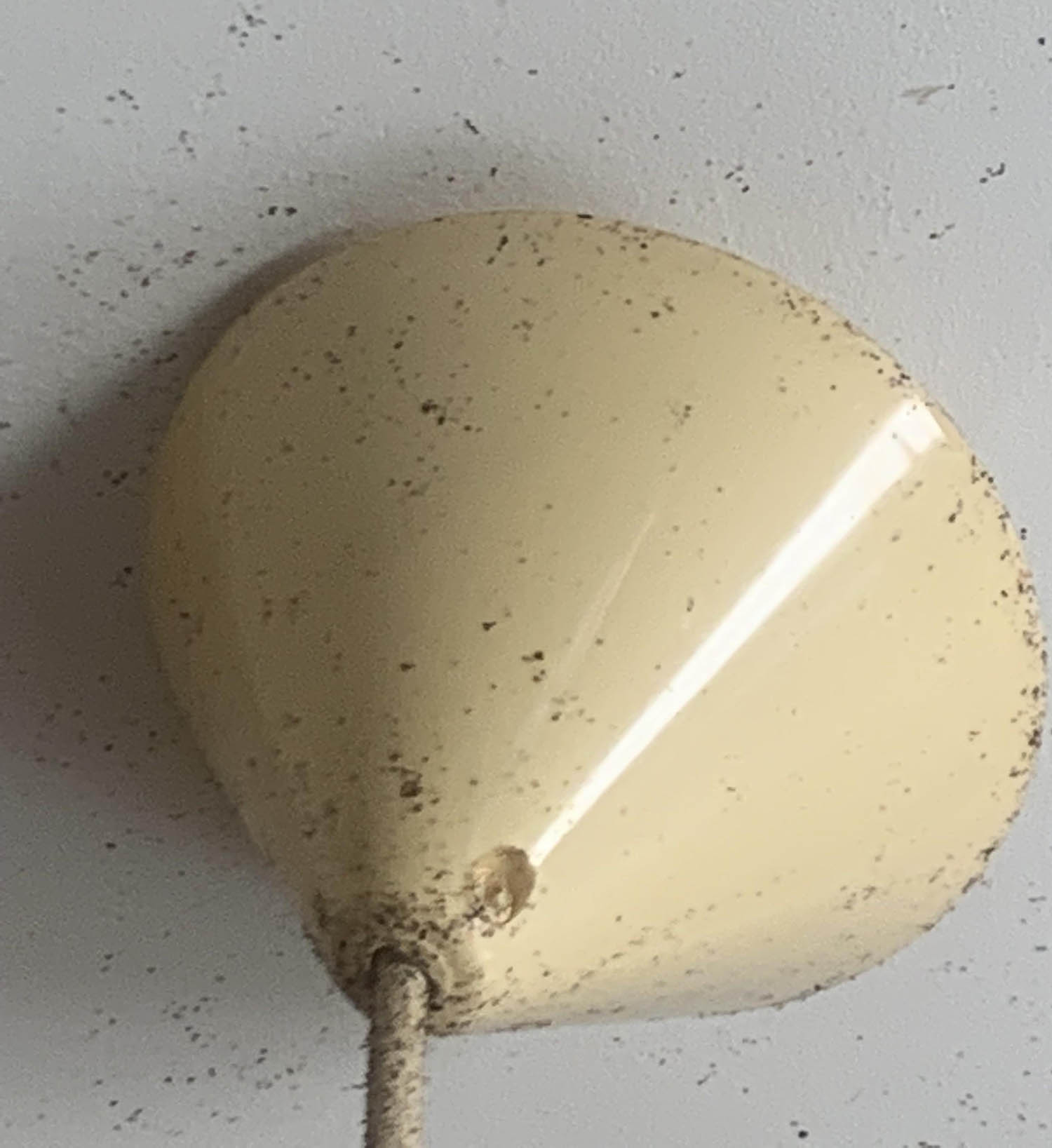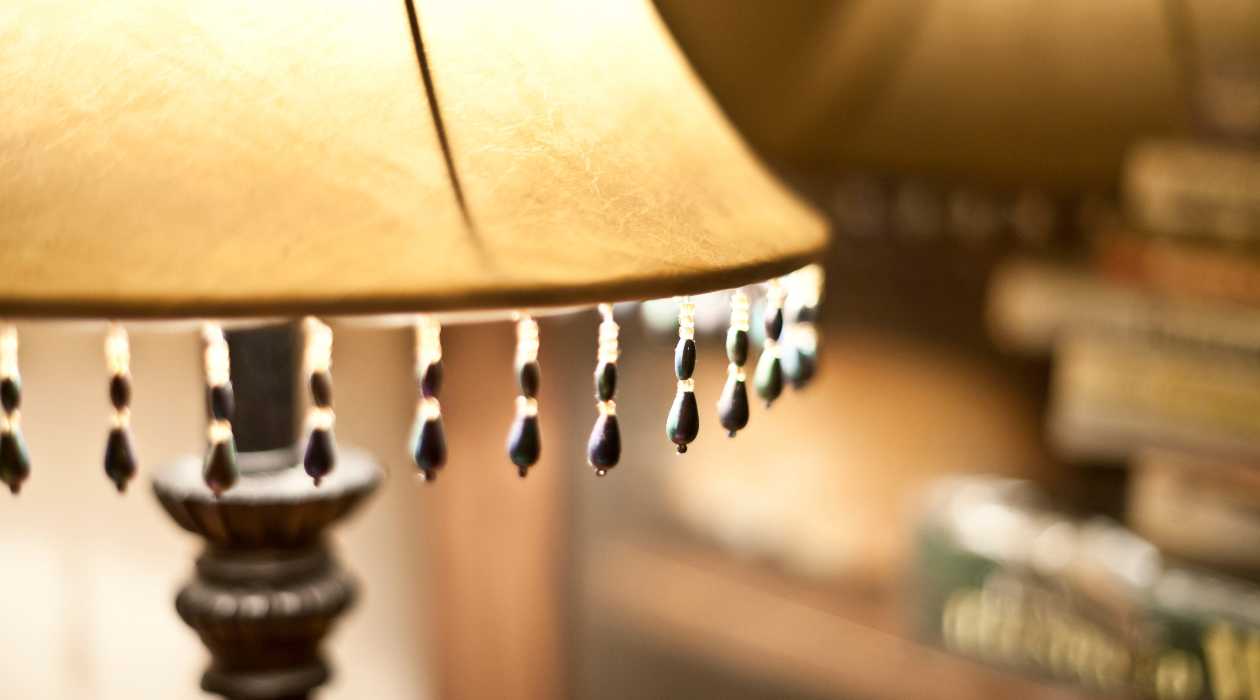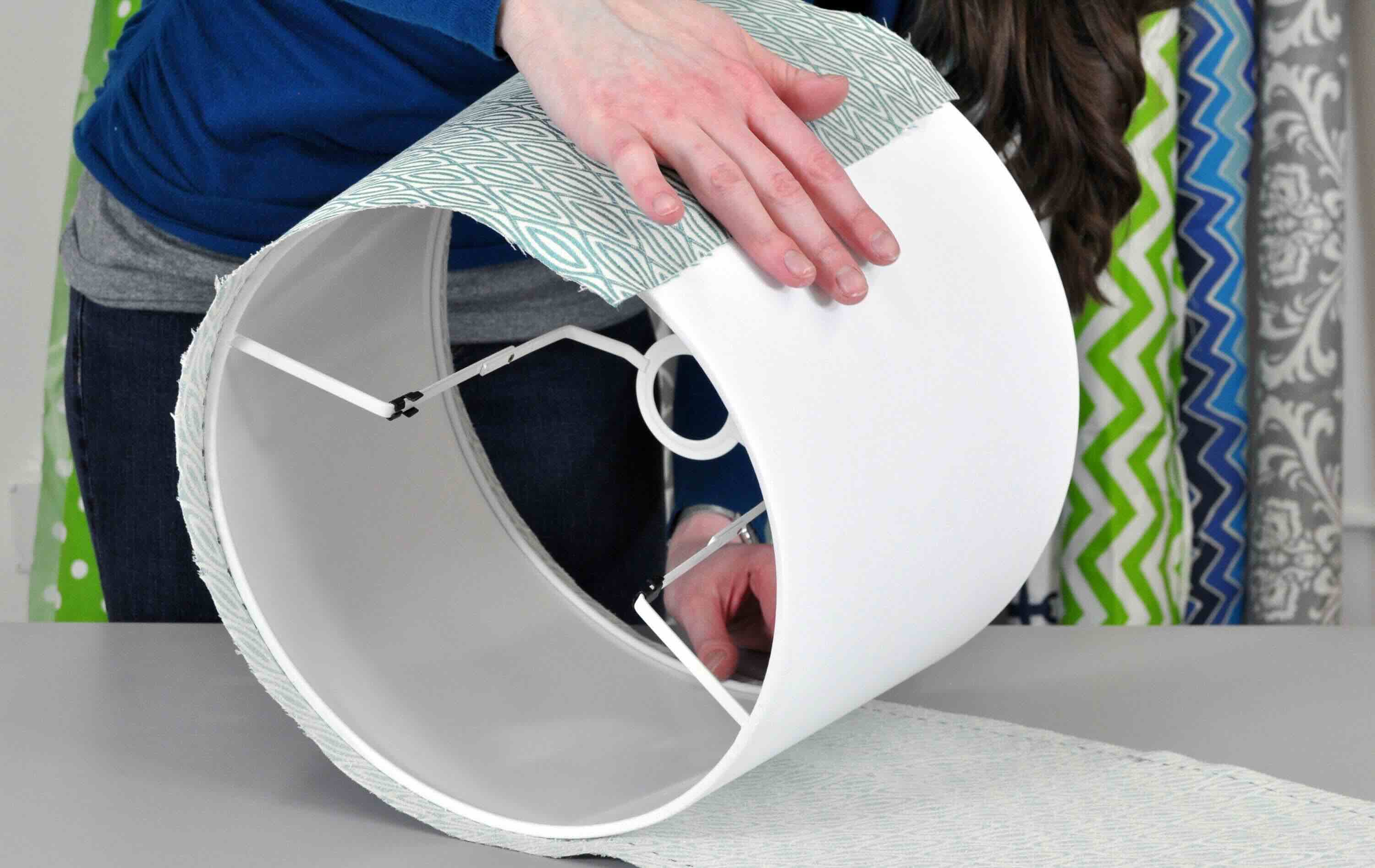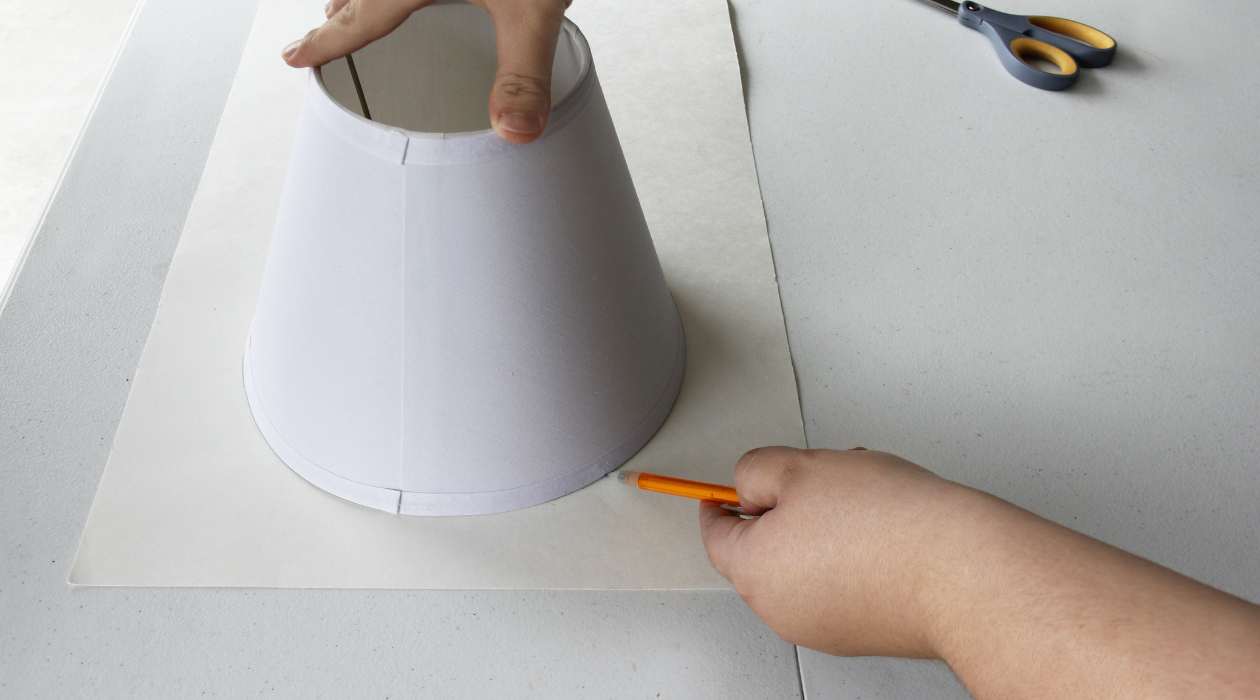

Furniture
How To Remove Fly Poop From Lamp Shades
Modified: May 6, 2024
Easily remove fly poop from lamp shades with these simple furniture cleaning tips. Say goodbye to pesky stains and keep your lamp shades looking fresh.
(Many of the links in this article redirect to a specific reviewed product. Your purchase of these products through affiliate links helps to generate commission for Storables.com, at no extra cost. Learn more)
Introduction
Welcome to our comprehensive guide on how to remove fly poop from lamp shades. While it may not be the most glamorous topic, it is a common issue that many homeowners face. Flies, with their pesky presence, often leave behind small specks of poop on our lamp shades, which can be both unsightly and unhygienic.
Having fly poop on your lamp shades can detract from the overall aesthetics of your home and make your living space feel unclean. However, with the right methods and techniques, you can easily restore the cleanliness of your lamp shades and eliminate any trace of fly poop.
In this article, we will explore various methods for removing fly poop from lamp shades, using simple household items and techniques. Whether you have fabric, plastic, or glass lamp shades, we have got you covered.
Before we delve into the methods, it’s important to note that prevention is key. Keeping flies away from your home is the first step in avoiding the annoyance of fly poop on your lamp shades. Make sure to keep your doors and windows properly sealed, use fly screens, and regularly clean your living spaces to minimize fly attraction.
Now, let’s dive into the different methods you can use to effectively remove fly poop from your lamp shades and restore their clean and attractive appearance.
Key Takeaways:
- Say goodbye to unsightly fly poop on your lamp shades with simple household solutions like vinegar, dish soap, lint rollers, and vacuum cleaners. Restore cleanliness and visual appeal effortlessly.
- Prioritize prevention by keeping your living spaces clean and implementing fly prevention measures to minimize the presence of flies and reduce the likelihood of future poop buildup.
Read more: How To Hang A Lamp Shade From The Ceiling
Why Fly Poop on Lamp Shades is a Problem
Fly poop on lamp shades can be an aggravating problem for several reasons. Firstly, it is unsightly. No one wants to see tiny specks of fly poop marring the beauty of their lamp shades. It can make a once pristine and elegant lamp shade look dirty and unkempt.
Secondly, fly poop on lamp shades is unhygienic. Flies are known to carry bacteria and pathogens on their bodies, and their poop can contain harmful microorganisms. When fly poop ends up on your lamp shade, it can potentially contaminate the surrounding area, posing a health risk to you and your family.
Furthermore, fly poop can cause an unpleasant odor. Over time, the accumulation of fly poop on lamp shades can create a foul smell, which can permeate the room and make it unpleasant to be in. This can be particularly bothersome if you spend a lot of time in the room or use the lamp shade as a source of ambient lighting.
Lastly, fly poop on lamp shades can attract more flies. The scent of fly poop can act as a signal to other flies, attracting them to the area. This can create a vicious cycle, with more flies leaving their mark on your lamp shades and potentially increasing the risk of infestation in your home.
Given these reasons, it’s important to address the issue of fly poop on lamp shades promptly. By removing the fly poop and taking preventive measures to keep flies away, you can maintain a clean, hygienic, and pleasant living environment.
Methods for Removing Fly Poop from Lamp Shades
Now that we understand the problems that fly poop on lamp shades can cause, let’s explore various methods to effectively remove it. These methods utilize common household items and techniques, making them easily accessible and affordable.
1. Using Vinegar and Water Solution: Vinegar is known for its cleaning properties and can be an effective solution for removing fly poop. Mix equal parts white vinegar and water in a spray bottle. Spray the solution onto a clean cloth or sponge, and gently dab the fly poop on the lamp shade. Continue until the poop is fully removed, then wipe the area with a damp cloth to remove any residue. Vinegar is safe to use on most lamp shade materials, but always test it on a small, inconspicuous area first.
2. Applying Dish Soap and Warm Water: Dish soap is another household item that can be used to clean lamp shades. Fill a basin or bucket with warm water and add a few drops of dish soap. Mix until sudsy and dampen a clean cloth or sponge with the soapy water. Gently scrub the fly poop on the lamp shade, applying light pressure. Rinse the cloth or sponge frequently and continue until the poop is completely removed. Rinse the lamp shade with clean water and allow it to air dry.
3. Utilizing a Lint Roller: A lint roller, typically used to remove lint from clothing, can also be handy for removing fly poop from lamp shades, especially fabric shades. Simply roll the sticky surface of the lint roller over the poop, applying gentle pressure. The sticky adhesive will pick up the poop, leaving your lamp shade clean. Repeat as necessary, and dispose of the used adhesive sheets.
4. Employing a Vacuum Cleaner: For fabric lamp shades, a vacuum cleaner with a brush attachment can be effective in removing fly poop. Set the vacuum to a low suction power and gently run the brush attachment over the poop, being careful not to damage the fabric. The vacuum will suction away the poop, leaving your lamp shade clean and fresh. Remember to empty the vacuum canister or replace the bag afterward to prevent any lingering odors.
5. Trying a Commercial Stain Remover: If the above methods don’t fully remove the fly poop, you can consider using a commercial stain remover specifically designed for the material of your lamp shade. Always follow the instructions provided by the manufacturer, and test the stain remover on a small, inconspicuous area first to ensure it doesn’t cause any damage.
No matter which method you choose, remember to work gently and avoid excessive scrubbing or rubbing, as it may damage the lamp shade material. Additionally, always prioritize the safety of your lamp shade and yourself by using appropriate cleaning methods and equipment.
By using these methods, you can effectively remove fly poop from your lamp shades and restore their cleanliness and visual appeal.
Method 1: Using Vinegar and Water Solution
One effective method for removing fly poop from lamp shades is by using a vinegar and water solution. Vinegar is a natural cleaner that is safe to use on most lamp shade materials. This method is simple, affordable, and can be done with items that you most likely already have in your home.
Here is a step-by-step guide on how to use vinegar and water to remove fly poop from your lamp shade:
- Prepare the vinegar and water solution by mixing equal parts white vinegar and water in a spray bottle. Make sure the spray bottle is clean and free of any previous chemical residues.
- Remove the lamp shade from the lamp base, if necessary, to have easier access to the affected area.
- Before applying the solution to the lamp shade, test it on a small, inconspicuous area to make sure it doesn’t cause any discoloration or damage.
- Once you are confident in the compatibility of the solution with your lamp shade material, spray the vinegar and water solution onto a clean cloth or sponge. Make sure the cloth or sponge is damp, but not dripping wet.
- Gently dab the fly poop on the lamp shade with the damp cloth or sponge. Do not rub or scrub vigorously, as this may cause damage to the material.
- Continue dabbing the affected area until the fly poop is fully removed. You may need to reapply the vinegar and water solution or use a clean section of the cloth or sponge as necessary.
- To remove any residue, wipe the area with a damp cloth or sponge that has been rinsed in clean water. This will help ensure that no vinegar residue is left behind on the lamp shade.
- Once you have successfully removed the fly poop, allow the lamp shade to air dry completely before placing it back on the lamp base.
Using vinegar and water is a simple and effective way to remove fly poop from lamp shades. However, it’s essential to exercise caution and test the solution on a small area before applying it to the entire lamp shade. In case of any doubt, consult the manufacturer’s guidelines or seek professional advice.
By following this method, you can restore the cleanliness and beauty of your lamp shade, keeping it free from unsightly and unhygienic fly poop.
Method 2: Applying Dish Soap and Warm Water
If you’re looking for another effective method to remove fly poop from your lamp shades, you can try using dish soap and warm water. This method is simple, safe, and utilizes household items that you likely already have in your kitchen.
Here’s a step-by-step guide on how to use dish soap and warm water to remove fly poop:
- Fill a basin or bucket with warm water. Make sure the water is not too hot to avoid damaging the lamp shade.
- Add a few drops of dish soap to the warm water and mix until it becomes sudsy.
- Dampen a clean cloth or sponge in the soapy water solution.
- Gently scrub the fly poop on the lamp shade with the cloth or sponge, applying light pressure. Be careful not to scrub too vigorously, as it may damage the lamp shade material.
- Rinse the cloth or sponge frequently to remove any accumulated poop and prevent recontamination.
- Continue scrubbing until the fly poop is completely removed from the lamp shade. Take your time and be thorough to ensure the best results.
- Rinse the lamp shade with clean water to remove any soap residue.
- Allow the lamp shade to air dry completely before placing it back on the lamp base.
Using dish soap and warm water is a gentle yet effective way to remove fly poop from lamp shades. The soap helps break down and lift the poop while the warm water aids in the cleaning process. This method is suitable for most types of lamp shade materials, but always test it on a small, inconspicuous area first if you’re unsure.
Remember to take precautions when washing delicate or fabric lamp shades. It’s advisable to consult the manufacturer’s guidelines or seek professional cleaning assistance if you’re uncertain about the compatibility of dish soap with your specific lamp shade material.
By following this method, you can successfully eliminate fly poop from your lamp shade, restoring its cleanliness and making it a more visually appealing addition to your home.
Use a soft brush or vacuum with a brush attachment to gently remove fly poop from lamp shades. For stubborn stains, mix mild dish soap with water and gently dab the affected area, then let it air dry.
Read more: How To Remove Bird Poop From A Patio
Method 3: Utilizing a Lint Roller
If you’re dealing with fly poop on a fabric lamp shade, utilizing a lint roller can be a convenient and effective method for removal. Lint rollers are commonly used to remove lint and pet hair from clothing, but they can also serve as a handy tool for cleaning lamp shades.
Here’s a step-by-step guide on how to use a lint roller to remove fly poop from your fabric lamp shade:
- Ensure the lint roller is clean and free of any previous debris. If necessary, remove any used adhesive sheets and replace them with fresh ones.
- Hold the lint roller firmly and roll it over the fly poop on the lamp shade. Apply gentle pressure to ensure the adhesive picks up the poop without damaging the fabric.
- Continue rolling the lint roller over the affected areas, using a peeling motion to expose a clean section of adhesive surface as needed.
- Inspect the lamp shade after each roll to check if any poop remains. If necessary, go over the area once again with the lint roller until the fly poop is completely removed.
- Dispose of the used adhesive sheets from the lint roller to prevent any recontamination. Be sure to follow the manufacturer’s instructions for proper disposal.
Lint rollers are a quick and effective solution for removing fly poop from fabric lamp shades. They are particularly useful for textured or delicate fabrics that may be difficult to clean with other methods.
If you don’t have a lint roller on hand, you can also try using adhesive tape wrapped around your hand with the sticky side facing out. This makeshift method can serve as a temporary alternative until you can obtain a lint roller.
Remember to exercise caution and avoid applying too much pressure, as excessive force may damage the fabric. If you’re unsure about the suitability of a lint roller for your specific lamp shade material, it’s always best to test it on a small, inconspicuous area first.
By utilizing a lint roller, you can effectively and efficiently remove fly poop from your fabric lamp shade, restoring its cleanliness and ensuring it remains an appealing part of your home decor.
Method 4: Employing a Vacuum Cleaner
If you’re dealing with fly poop on a fabric or delicate lamp shade, using a vacuum cleaner with a brush attachment can be an effective and safe method for removal. This method allows you to suction away the fly poop without the need for excessive scrubbing or direct contact with the lamp shade material.
Here’s a step-by-step guide on how to use a vacuum cleaner to remove fly poop from your lamp shade:
- Make sure your vacuum cleaner is equipped with a brush attachment. This attachment has soft bristles that will prevent damage to the lamp shade fabric.
- Remove the lamp shade from the lamp base, if necessary, to have easier access and maneuverability during the cleaning process.
- Set your vacuum cleaner to a low suction power setting to prevent any pulling or stretching of the fabric.
- Gently run the brush attachment over the fly poop on the lamp shade, using light, sweeping motions. Avoid pressing too hard or going over a single spot for too long to prevent any potential damage.
- Continue using the vacuum cleaner until all visible fly poop on the lamp shade has been suctioned away.
- Inspect the lamp shade after vacuuming to ensure all the fly poop has been successfully removed. If necessary, repeat the process in areas where remnants of the poop are still visible.
- Empty the vacuum canister or replace the vacuum bag to prevent any lingering odors or recontamination.
- Allow the lamp shade to air dry completely before reattaching it to the lamp base.
Using a vacuum cleaner is a convenient method for removing fly poop from delicate or fabric lamp shades without the risk of causing damage. The soft bristles of the brush attachment effectively loosen and suction away the poop, leaving your lamp shade clean and refreshed.
It’s important to note that this method is not suitable for all types of lamp shades, especially those made of non-fabric or delicate materials. Ensure that your lamp shade can withstand the gentle suction of a vacuum cleaner before attempting this method. If you have any doubts, consult the manufacturer’s guidelines or seek professional advice.
By employing a vacuum cleaner with a brush attachment, you can easily and safely eliminate fly poop from your lamp shade, restoring its cleanliness and preserving its delicate appearance.
Method 5: Trying a Commercial Stain Remover
If the previous methods haven’t fully removed the fly poop from your lamp shade, or if you’re dealing with a stubborn stain, you may consider using a commercial stain remover. Commercial stain removers are specifically formulated to tackle tough stains and can be effective in removing fly poop from various types of lamp shade materials.
Here’s a step-by-step guide on how to use a commercial stain remover to remove fly poop:
- Choose a commercial stain remover that is suitable for your specific lamp shade material. Read the instructions and guidelines provided by the manufacturer to ensure compatibility and proper usage.
- Before applying the stain remover to the entire lamp shade, test it on a small, inconspicuous area first. This will allow you to check for any adverse reactions, discoloration, or damage to the material.
- If the stain remover passes the initial compatibility test, follow the instructions provided by the manufacturer for application and usage.
- Apply the stain remover directly to the affected areas of the lamp shade where the fly poop is present. Ensure that you cover the entire poop stain.
- Gently rub the stain remover into the fabric using a clean cloth or sponge. Be cautious not to scrub too harshly, as this may cause damage to the material.
- Allow the stain remover to sit on the lamp shade for the recommended amount of time specified by the manufacturer. This will give the product sufficient time to break down and lift the stain.
- After the designated time has passed, rinse the lamp shade with clean water to remove any residual stain remover.
- Allow the lamp shade to air dry completely before reattaching it to the lamp base.
It’s important to follow the instructions provided by the manufacturer and to exercise caution when using commercial stain removers. Some products may require ventilation or protective equipment, so be sure to read and adhere to the safety precautions outlined on the product packaging.
Remember that not all commercial stain removers are suitable for all types of lamp shade materials. Always choose a stain remover that is specifically designed for the material of your lamp shade to avoid any potential damage or discoloration.
By trying a commercial stain remover, you can effectively remove stubborn fly poop stains from your lamp shade and restore its cleanliness and appearance.
Precautions and Safety Measures
While removing fly poop from lamp shades, it is essential to take certain precautions and safety measures to ensure the process is effective and safe for both you and your lamp shade. Here are some precautions to keep in mind:
- Test on a small, inconspicuous area: Before using any cleaning solution or method, test it on a small, hidden area of the lamp shade. This will help you determine if the solution is compatible with the material and prevent any potential damage, discoloration, or adverse reactions.
- Follow manufacturer’s guidelines: If you are using a commercial stain remover or any other specialized cleaning product, carefully read and follow the manufacturer’s instructions for proper application, usage, and safety precautions.
- Protect your hands and eyes: When working with cleaning solutions or stain removers, it is advisable to wear protective gloves and safety goggles to prevent any accidental contact with the eyes or skin.
- Avoid excessive scrubbing or rubbing: While cleaning the lamp shade, be gentle and avoid excessive scrubbing or rubbing, as it can potentially damage or pull apart delicate materials. Use light pressure and gentle motions to remove the fly poop.
- Pay attention to lamp shade material: Different lamp shade materials may require different cleaning methods. Be sure to consider the specific material of your lamp shade when choosing a cleaning solution or method to avoid any damage or discoloration.
- Ensure proper ventilation: If you are using any cleaning solutions or stain removers that generate fumes, make sure to work in a well-ventilated area to prevent inhaling potentially harmful chemicals. Open windows or use fans, if necessary.
- Dispose of cleaning materials properly: After completing the cleaning process, dispose of any used cleaning cloths, sponges, or adhesive sheets in a sealed bag or trash bin to prevent recontamination or spreading of flies.
- Store cleaning products safely: Keep all cleaning products out of reach of children and pets. Store them in a secure location away from food items to avoid any accidental ingestion or misuse.
- Regularly maintain cleanliness: To prevent future fly poop buildup, clean your lamp shades regularly and implement fly prevention measures such as keeping doors and windows properly sealed, using fly screens, and maintaining a clean living space.
By following these precautions and safety measures, you can ensure a successful and safe cleaning process for your lamp shades while effectively removing fly poop.
Read more: How To Remove Poop From A Grass Carpet
Conclusion
Dealing with fly poop on your lamp shades can be a frustrating and unsightly problem. However, with the right methods and techniques, you can easily remove the fly poop and restore the cleanliness and visual appeal of your lamp shades.
In this comprehensive guide, we have explored various methods for removing fly poop from lamp shades, including using vinegar and water solutions, applying dish soap and warm water, utilizing a lint roller, employing a vacuum cleaner, and trying commercial stain removers. Each method offers its own advantages and can be effective depending on the type of lamp shade material you are working with.
Throughout the process, it’s important to take precautions and follow safety measures, such as testing cleaning solutions on a small area, wearing protective gear, avoiding excessive scrubbing, and ensuring proper ventilation. These precautions will help protect both you and your lamp shade from any potential damage or harm.
Remember, prevention is key to keeping your lamp shades fly poop-free. Regularly clean your living spaces, seal doors and windows, and implement fly prevention measures to minimize the presence of flies and reduce the likelihood of future poop buildup.
By following the methods outlined in this guide and implementing preventive measures, you can maintain clean and beautiful lamp shades, free from the annoyance and unhygienic nature of fly poop. So, say goodbye to those pesky poop stains and enjoy the renewed attractiveness of your lamp shades!
Now that your lamp shades are spotless, why stop there? Dive into our comprehensive guide on keeping every nook of your refrigerator pristine with top cleaning tips. Next, tackle common restroom challenges by learning effective methods for stain removal from toilet seats. Both guides offer straightforward, practical advice to keep your home looking its best.
Frequently Asked Questions about How To Remove Fly Poop From Lamp Shades
Was this page helpful?
At Storables.com, we guarantee accurate and reliable information. Our content, validated by Expert Board Contributors, is crafted following stringent Editorial Policies. We're committed to providing you with well-researched, expert-backed insights for all your informational needs.













